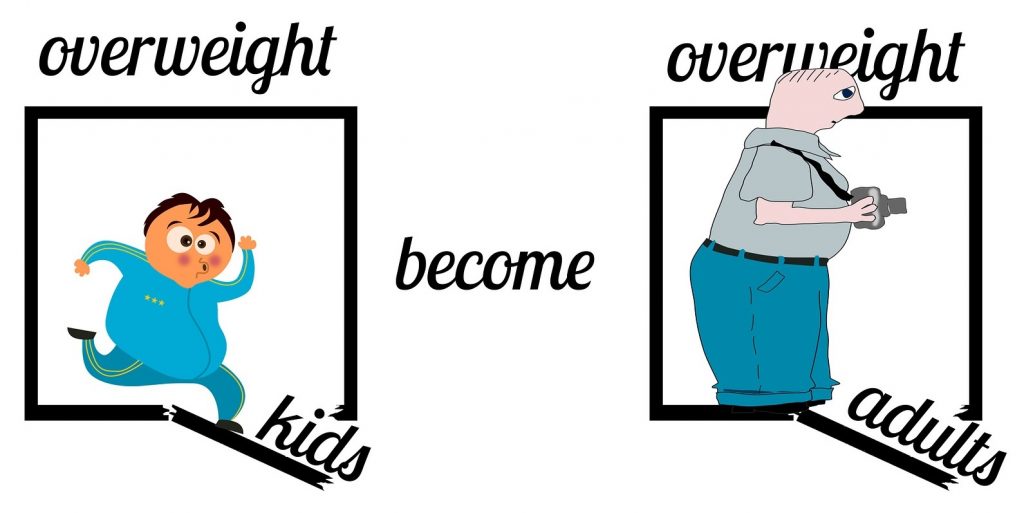
Obesity
Everything you need to know about obesityDefinition and causes
Obesity is an excessive presence of fat (which in technical terms is called adipose tissue) compared to the adequate amount that should be present for the height and age of the person. For each person, however, there is not just one “ideal” weight but a range of normal weights. It is because small variations are normal as well as the total weight is given by the sum of the weight of bones, muscles, water and fat. Therefore, a weight which is greater than the sum of bone mass or muscles can falsely suggest an excess of fat.
There are many risk factors that can predispose to obesity such as being born prematurely, not being breastfed, being of low socio-cultural level, consuming many junk-foods, being physically inactive, watching TV and/or using electronic games for more than 2 hours a day, etc. The genetic or endocrinological causes of obesity are less than 5% of the total and are always coupled with a reduced level of intelligence and often with a reduced height. However, the most frequent type of obesity is the one defined as “essential” and that is without genetic or endocrinological causes. In very simple terms, adipose tissue increases when the energy generated with food is greater than the energy spent, especially with physical activity.

Impacts on health
An excess of body fat gives various complications, especially diabetes mellitus, hypertension, breathing difficulties, fatty liver, early arthrosis of the joints and psychological difficulties. Another serious complication is that ¾ of obese adolescents, if they do not lose weight by the end of adolescence, will remain obese throughout their adult lives. Obesity among adolescents is a problem that is present all over the world. Developing countries are beginning to have the double burden of prevention and treatment of not only malnutrition but also obesity.

With such a workload and costs for the national health systems, research and studies on obesity are constantly increasing. The studies are aimed at determining the genetic causes, preventing the development of obesity, as well as the prevention and treatment of its complications. A very interesting field of study is the socio-legal one in which international organizations such as the World Health Organization (WHO) try to protect individuals from misleading advertising about junk food and from ineffective and dangerous obesity treatments, not based on scientific principles.
Relevant studies on obesity
Physical activity and clustered cardiovascular risk in children: a cross-sectional study (The European Youth Heart Study). Andersen LB, Harro M, Sardinha LB, Froberg K, Ekelund U, Brage S, Anderssen SA. Lancet. 2006 Jul 22; 368(9532): 299-304.
Integrating sedentary behavior in the theoretical model linking childhood to adulthood activity and health? An updated framework. Thivel D, Chaput JP, Duclos M. Physiol Behav. 2018 Nov 1; 196: 33-35.
Associations between meeting combinations of 24-hour movement recommendations and dietary patterns of children: A 12-country study. Thivel D, Tremblay MS, Katzmarzyk PT, Fogelholm M, Hu G, Maher C, Maia J, Olds T, Sarmiento OL, Standage M, Tudor-Locke C, Chaput JP; ISCOLE Research Group. Prev Med. 2019 Jan; 118: 159-165.